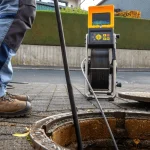Maintenance of Grease Traps: Taming the Fatbergs in Your Kitchen
One of the most important elements of commercial kitchen waste management is the grease trap, which helps to prevent harmful blockages in plumbing systems. However, improper maintenance of grease traps can lead to the formation of fatbergs, which are large, hard masses of fats, oils, and grease (FOG). These fatbergs can cause significant damage to both plumbing and sewage systems, leading to costly repairs and environmental damage. This article will explore the importance of grease trap maintenance, the dangers of fatbergs, and the best practices for grease disposal in Australian commercial kitchens.
Understanding Grease Traps and Its Importance
A grease trap is a plumbing device designed to capture and separate fats, oils, and grease from wastewater before it enters the main plumbing system. This separation process helps prevent the accumulation of FOG in pipes, reducing the risk of blockages in the plumbing system. Kitchen plumbing is especially vulnerable to grease-related issues, as left over cooking oils, fats, and dairy products can easily find their way into sinks and drains. Over time they build-up, leading to the formation of grease deposits that can affect the performance of the entire plumbing system.
The Dangers of Fatbergs in Plumbing Systems
Fatbergs are formed when grease, oil, and other substances like wet wipes, food scraps, and soap combine in drains and solidify. The result is a large, rock-like mass that can clog pipes and cause blockages in wastewater systems. This issue is not only inconvenient but can also be costly for property owners and councils alike.
The problem of fatbergs is widespread across Australia, particularly in areas with older plumbing infrastructure, and if left unchecked, these obstructions can lead to wastewater overflows, which pose significant environmental and health risks.
Maintenance of Grease Traps: The Key to Prevention
Proper grease trap maintenance is crucial to avoid fatberg formation, and regular cleaning and servicing ensures that the grease trap operates efficiently, preventing the accumulation of fats and oils. Guidelines for grease trap maintenance suggest that traps should be cleaned every 3 to 6 months, depending on usage and the type of establishment that operates them. High-traffic kitchens in commercial settings like restaurants or cafes may require more frequent cleaning.
Regular maintenance involves removing the grease and oil collected in the trap and replacing the filter to ensure that it continues to separate fats and oils from wastewater effectively.
Best Practices for FOG Disposal
While regular maintenance of the grease traps is vital, it is equally important to practice responsible FOG disposal to prevent unnecessary build-up in the first place. Here are some practical tips for disposing of fats, oils, and grease properly:
- Do Not Pour Fats Down the Drain: A common issue is pouring leftover cooking fats and oils directly into the kitchen sink. Instead, collect these materials in a container and dispose of them in the bin once they have solidified.
- Wipe Plates and Pans: Before washing dishes, wipe off excess oil and grease from plates, pans, and utensils with a paper towel. This simple step reduces the amount of fat that enters the plumbing system.
- Use Eco-Friendly Products: Where possible, choose biodegradable or plant-based oils for cooking, as these break down more easily than animal fats. While this doesn’t eliminate the need for grease traps, it does reduce the overall volume of fat entering your plumbing system.
- Avoid Using Drain Cleaners: Many household drain cleaners are not effective in clearing fat build-up and can actually make the problem worse by pushing grease further down the system. If you suspect a blockage, it is best to call a professional plumber for assistance.
The Role of Regular Inspections of Grease Traps
In addition to routine cleaning, regular inspections of grease traps are essential to identify any issues before they escalate into a larger problem. An inspection will allow a qualified waste management professional to assess the functionality of your grease trap and ensure that it is operating efficiently. During an inspection, a professional may check for issues like:
- Inadequate grease separation
- Overfilled grease traps
- Faulty components or damaged parts
- Signs of leaks or potential blockages
It is advisable to schedule inspections at least twice a year, or more frequently if the kitchen is used heavily. This preventative measure can save significant costs in the long run by ensuring that your grease trap functions effectively and prevents major plumbing issues.
The Environmental Impact of Fatbergs
The formation of fatbergs doesn’t just pose a risk to plumbing systems, it also has a significant environmental impact. When fatbergs block sewer lines, wastewater can overflow into local waterways, leading to contamination and pollution. This not only harms local ecosystems but can also contribute to public health risks.
In response to the increasing issue of fatbergs, various levels of government have introduced initiatives to promote better waste management practices. These initiatives include educating businesses and households about the importance of proper grease disposal and the role of grease trap maintenance in preventing environmental damage.
Taming the Fatbergs in Your Kitchen
Grease trap maintenance is an essential practice for preventing fatberg formation and maintaining a healthy kitchen plumbing system. By understanding the importance of grease traps and following proper disposal methods, you can help protect your property and the environment. Regular inspections and maintenance are the key to ensuring that your grease trap remains in good working order.
If you’re in need of grease trap maintenance or assistance with FOG disposal in your kitchen, contact Clarence Valley Septics today on +61 2 6645 3100 or via our website. Our team can help you maintain a clean and functional plumbing system. Let us help you keep your kitchen running smoothly. Reach out for an inspection or cleaning service today.


